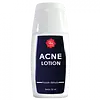What's inside
What's inside
 Key Ingredients
Key Ingredients

 Benefits
Benefits

 Concerns
Concerns

 Ingredients Side-by-side
Ingredients Side-by-side

Water
Skin ConditioningGlycerin
HumectantZinc Oxide
Cosmetic ColorantAlcohol Denat.
AntimicrobialSulfur
AntiseborrhoeicMagnesium Aluminum Silicate
AbsorbentMethylparaben
PreservativeAcrylamide/Sodium Acryloyldimethyltaurate Copolymer
Emulsion StabilisingXanthan Gum
EmulsifyingTartaric Acid
BufferingC13-14 Isoparaffin
EmollientMelaleuca Alternifolia Leaf Oil
AntioxidantLaureth-7
EmulsifyingCI 15985
Cosmetic ColorantCI 16255
Cosmetic ColorantWater
Skin ConditioningDipotassium Azelate
Glycolic Acid
BufferingC12-13 Alkyl Lactate
EmollientMagnesium Aluminum Silicate
AbsorbentSuccinic Acid
BufferingAcrylamide/Sodium Acryloyldimethyltaurate Copolymer
Emulsion StabilisingXanthan Gum
EmulsifyingDimethyl Isosorbide
SolventMagnesium/Aluminum/Hydroxide/Carbonate
Azelaic Acid
BufferingTocopheryl Acetate
AntioxidantC13-14 Isoparaffin
EmollientHydroxypinacolone Retinoate
Skin ConditioningLaureth-7
EmulsifyingTrisodium Ethylenediamine Disuccinate
Water, Dipotassium Azelate, Glycolic Acid, C12-13 Alkyl Lactate, Magnesium Aluminum Silicate, Succinic Acid, Acrylamide/Sodium Acryloyldimethyltaurate Copolymer, Xanthan Gum, Dimethyl Isosorbide, Magnesium/Aluminum/Hydroxide/Carbonate, Azelaic Acid, Tocopheryl Acetate, C13-14 Isoparaffin, Hydroxypinacolone Retinoate, Laureth-7, Trisodium Ethylenediamine Disuccinate
Ingredients Explained
These ingredients are found in both products.
Ingredients higher up in an ingredient list are typically present in a larger amount.
We don't have a description for Acrylamide/Sodium Acryloyldimethyltaurate Copolymer yet.
This ingredient is also known as "C13-14 Isoalkane".
C13-14 Isoparaffin is created from petroleum-based mineral oils. It is an emollient and helps thicken a product.
As an emollient, it helps keep the skin soft and smooth by creating a barrier on top. This barrier traps moisture in, keeping the skin hydrated.
C13-14 Isoparaffin may not be fungal-acne safe.
Learn more about C13-14 IsoparaffinLaureth-7 is created by the ethoxylation of lauryl alcohol using ethylene oxide. Lauryl alcohol is a fatty alcohol with hydrating properties.
This ingredient is an emulsifier and cleansing ingredient. As an emulsifier, it is used to prevent ingredients from separating. It also helps cleanse the skin by gathering dirt, oil, and pollutants to be rinsed away.
Magnesium Aluminum Silicate is a type of silica. It comes from naturally occuring minerals such as silicate ores and clay.
Magnesium aluminum silicate is used for enhancing texture and as an absorbent. Due to its large molecular size, it is unable to be absorbed into the skin.
Like other types of silica, this ingredient can be used to thicken a product. As an absorbent, it may be used to absorb extra water or help prevent clumping.
Although “aluminum” in an ingredient name can raise red flags for some consumers, the form and usage context matter significantly. For typical topical applications, there is no substantial evidence of health risks - such as cancer, neurotoxicity, or systemic “aluminum overload.”
Learn more about Magnesium Aluminum SilicateWater. It's the most common cosmetic ingredient of all. You'll usually see it at the top of ingredient lists, meaning that it makes up the largest part of the product.
So why is it so popular? Water most often acts as a solvent - this means that it helps dissolve other ingredients into the formulation.
You'll also recognize water as that liquid we all need to stay alive. If you see this, drink a glass of water. Stay hydrated!
Learn more about WaterXanthan gum is used as a stabilizer and thickener within cosmetic products. It helps give products a sticky, thick feeling - preventing them from being too runny.
On the technical side of things, xanthan gum is a polysaccharide - a combination consisting of multiple sugar molecules bonded together.
Xanthan gum is a pretty common and great ingredient. It is a natural, non-toxic, non-irritating ingredient that is also commonly used in food products.
Learn more about Xanthan Gum